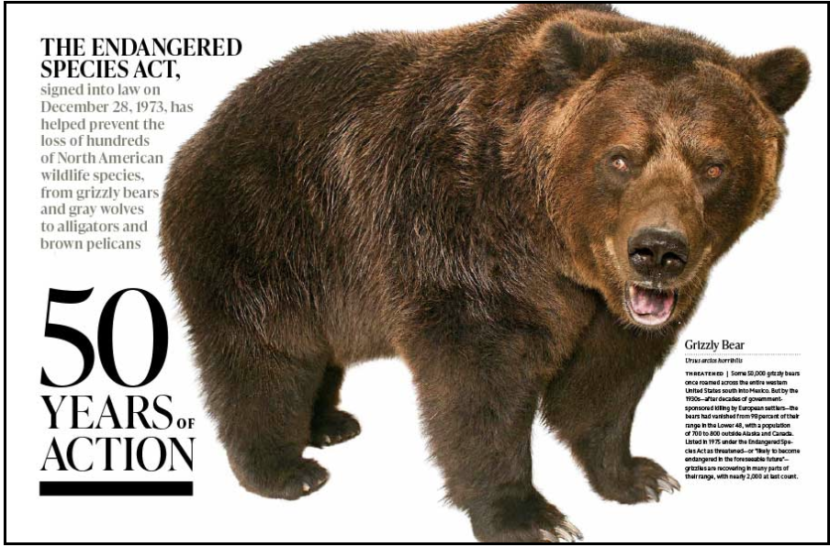The Endangered Species Act at 50 & What’s Next for Wildlife
By Brianna Randall // Photos by Joel Sartore
THE SIGHT OF A BALD EAGLE GLIDING OVERHEAD, white head framed against the blue sky, is sure to spark a sense of awe—and perhaps a breath of gratitude. An emblem of strength, courage and freedom, our country’s national symbol was once nearly extinct in the Lower 48.
In 1776, when the country was founded, about a half-million bald eagles soared above what’s now the continental United States. But beginning in the late-1800s, the population steadily declined as eagles fell victim to habitat loss, deliberate killing and, starting in the 1940s, the widespread use of DDT—a synthetic pesticide that washed off the land into waterways and contaminated fish that eagles eat. By 1963, only 417 breeding pairs remained in the country outside Alaska.
Today, however, some 316,700 eagles once again soar the nation’s skies—thanks in large part to the Endangered Species Act (ESA), which catalyzed a number of eagle conservation measures, including protection for critical habitat, a ban on DDT and captive breeding and reintroduction programs.

